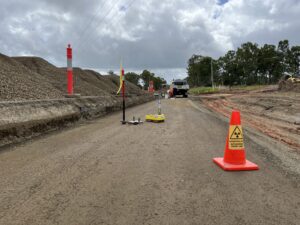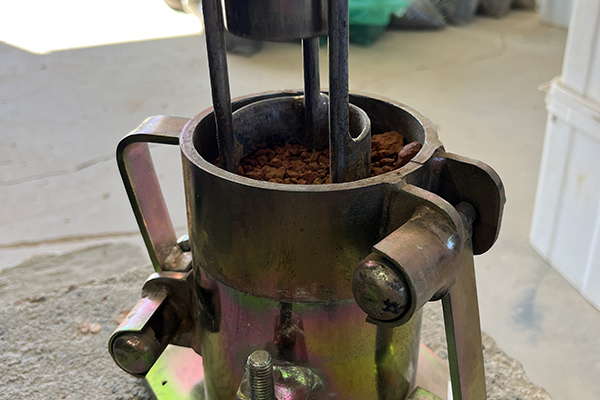In the complex world of construction material testing, precision and efficiency are paramount. One term that plays a crucial role in streamlining this process is the assigned value. But what exactly does it entail, and why is it indispensable in various projects?
What is an ‘assigned value’ in the construction material testing industry?
An assigned value essentially refers to the practice of assigning an average Maximum Dry Density (MDD) and Optimum Moisture Content (OMC) value to specific material types and sources. These values serve as reference points for calculating dry density ratio values concerning compaction control. Typically, assigned values are applicable to uniform materials sourced from quarries or other consistent sources with minimal variation. However, there are stringent limits on material variability based on its properties, as outlined in industry standards such as table 1 from Q144A.

What types of projects are assigned values used on?

Assigned values can be used on any project where compaction control is needed. Assigned values find application across a spectrum of projects involving the importation or production of consistent materials. Whether it’s unbound pavements, plant-mixed stabilised pavements, or insitu stabilised pavements, these values facilitate efficient compaction control. Additionally, they can extend to earthworks and subgrade layers, provided the material meets specified uniformity criteria and undergoes periodic checks aligned with project specifications.
What are the typical material types that assigned values are performed on?
The types of materials subject to assigned values predominantly include quarried products like Type 2.1 and 2.3 roadbase gravels, although their usage isn’t limited to these alone.
Why is it beneficial to use assigned values?
The advantages of utilising assigned values are manifold. Primarily, they expedite result turnaround times significantly. When coupled with a bias for Qld Department of Transport and Main Roads (DTMR) methods or a moisture intercept for Australian Standard (AS) methods using nuclear density gauges, results become nearly instantaneous. This acceleration is invaluable in ensuring project timelines are met without compromising on accuracy.
When can an assigned value NOT be used?
There are instances where assigned values cannot be employed. Assign values should not be used when the material is not consistent enough to meet the requirements of a specific method.
From the AS method, if monitoring check sampling and testing haven’t been performed within the previous three months, assigned values should not be utilised.
From the DTMR method, quarry materials and plant-mixed stabilised materials are to be checked by obtaining at least one sample at the following frequency:
a. After the supply of not more than 10,000 tonnes of material
b. If assigned values have not been used for 2 months or more, or
c. If the assigned values have not been used on the project being testing.
What are the differences between the AS and DTMR methods?
Distinguishing between AS and DTMR methods sheds further light on the nuances of assigned value implementation. While both standards serve similar purposes, DTMR provides specific guidelines for insitu stabilised materials, a facet not covered by AS. Moreover, while AS allows for unprocessed materials, DTMR restricts usage to quarry-produced or insitu stabilised materials. Keeping in mind that DTMR technical specifications stipulate AS methods for earthworks, therefore, the AS assigned value would be used in this situation. Both methods have the same requirement for quarry processed / pavement materials but have different processes for checking the assigned value of insitu stabilised for DTMR and unprocessed material for AS.
What are the specifications of the Maximum Dry Density (MDD) and the Optimum Moisture Content (OMC) values?
The specifications for MDD and OMC values adhere to standardised methods. These methods outline rigorous testing procedures essential for maintaining the consistency and reliability of assigned values across diverse projects.
AS 1289.5.4.2 – Methods of testing soils for engineering purposes, Method 5.4.2: Soil compaction and density tests — Compaction control test — Assignment of maximum dry density and optimum moisture content values
Q144A – Assignment of maximum dry density and optimum moisture content for soils and crushed rock
In essence, assigned values epitomise efficiency and precision in the realm of construction material testing. By providing standardised reference points, they streamline compaction control processes, ultimately contributing to the seamless execution of construction projects. Embracing these values not only accelerates project timelines but also upholds the highest standards of quality and reliability in the construction industry.
Do you require compaction control and testing for your next project? Contact our professional team on 1300 295 835 or request a quote here.





